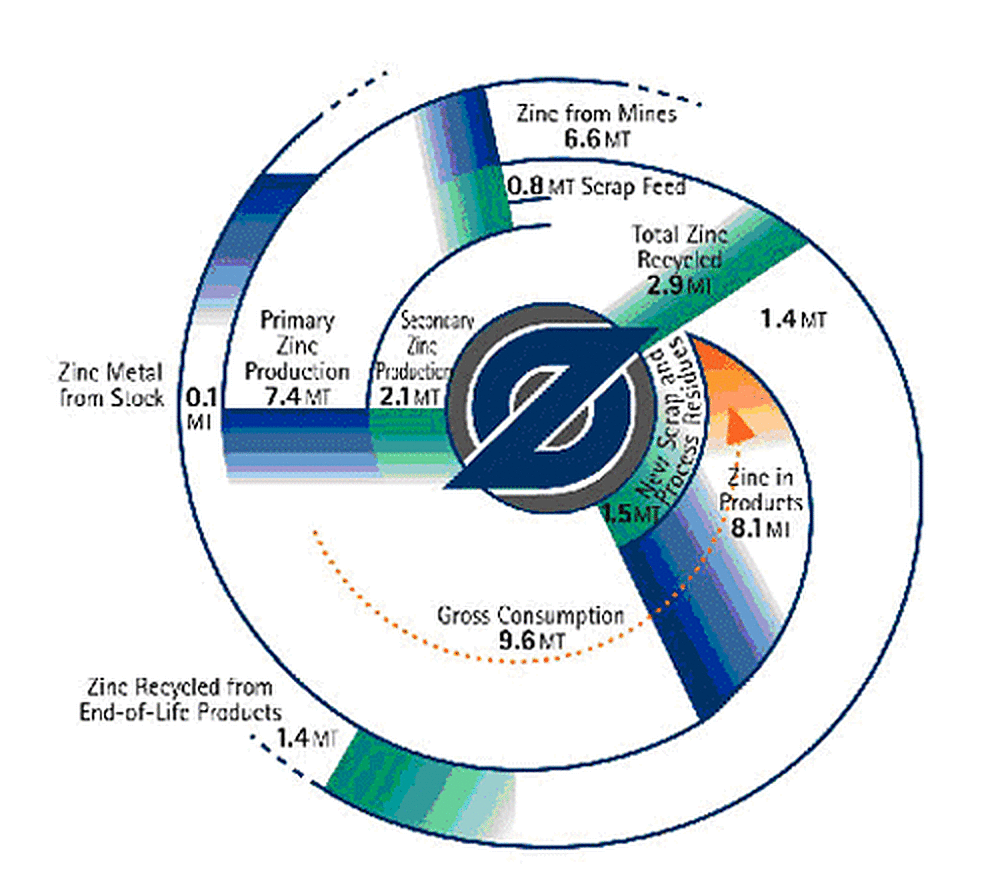Zinc Recycling
Zinc brings a multitude of economic and social benefits to society. Humans have found a wide range of uses for this versatile natural element whose properties are valued in many industries.The most common application of zinc is protecting steel from corrosion by hot-dip galvanizing. The zinc-steel combination has significant economic benefits in terms of life-cycle costs. Improved air quality in many industrialized countries, with diminishing levels of sulfur dioxide (SO2), means today zinc coatings provide even longer protection for steel.
| Recycling/Reclamation Rates of Hot-Dip Galvanized Steel | ||
|---|---|---|
| Zinc | Steel | |
| Reclamation Rate | 80% | 100% |
| Recycling Rate | 30% | 70% |
Steel is one of the most widely-used materials on the planet, and thanks to zinc, steels durability can be prolonged. Both steel and zinc are 100% recyclable indefinitely without the loss of chemical or physical properties. In fact, steel is the most recycled material in the world with virtually 100% of all structural steel reclaimed for repossessing and nearly 94% of structural shapes are built from recycled steel. The reclamation rate for zinc is more than 80% - meaning the majority of zinc available for recycling is indeed recycled.
Presently, approximately 70% of the zinc produced originates from mined ores and 30% from recycled or secondary zinc. The level of recycling is increasing in step with progress in zinc production and zinc recycling technologies. Zinc is recycled at all stages of production and use - for example, from emissions that arise during the production of galvanized steel sheet, from scrap generated during manufacturing and installation processes, and from products at the end-of-life. The pie chart below describes the percentage of recovered zinc from various products manufactured with zinc.

The life of zinc-containing products is variable and can range from 10-15 years for cars or household appliances, to over 100 years for zinc sheet used for roofing. Street lighting poles made of zinc-coated steel can remain in service for 50 years or much longer, and transmission towers for over 70 years. All these products tend to be replaced due to obsolescence, not because the zinc has ceased to protect the underlying steel. For example, zinc coated steel poles placed in the Australian outback a hundred years ago are still in excellent condition.
The presence of zinc coating on steel does not restrict steels recyclability and all types of zinc-coated products are recyclable. Zinc coated steel is recycled along with other steel scraps during the steel production process the zinc volatilizes and is then recovered.The supply of zinc-coated steel scrap is expected to double over the next five years, as more zinc-coated vehicles enter the recycling stream.
Courtesy of the International Zinc Association (IZA)
